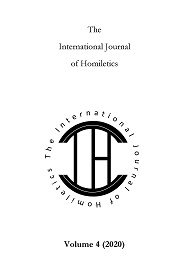Neuroscience and Homiletics in Dialogue: Perspectives for Preaching
DOI:
https://doi.org/10.21827/ijh.2020.39508Abstract
The modern history of neuroscience is still being written.1 Neuroscience has a long tradition of focusing on this object.2 However, while science with its status, it is recent.3 Its field of activities is broad, thereby also increasing several areas of knowledge, such as biology and medicine (contributing to the survey area of brain activities, regeneration research about the injured brain, the affect of drugs on mirror neurons, etc.),4 psychology (contributing to the survey area of human behavior),5 education (contributing to research that helps to understand how the brain learns),6 Philosophy/Theology (reconsidering the human’s identity, how conscience, faith is formed, etc)7 and, recently, artificial marketing and intelligence. In the area of neuroscience two distinct visions with correlating methodological approaches compete. The first seeks to find and associate a specific neuron with each human action or behavior. Here there is a reductionism of human beings to electrochemical phenomena in the brain. The second view perceives the nervous system with a much more holistic dimension. The objective, in that case, would not be to ask “why” first but to ask “how.” Both views are not mutually exclusive.
Published
Issue
Section
Copyright (c) 2020 Klaus A. Stange

This work is licensed under a Creative Commons Attribution 4.0 International License.


